We are the masters in the world in providing best exam 70-351 exam product, exam 70-506 lab preparations and exam 70-621 exam preparation solutions. You can get our 70-656 certification material and exam 70-448 dumps at very reasonable prices.
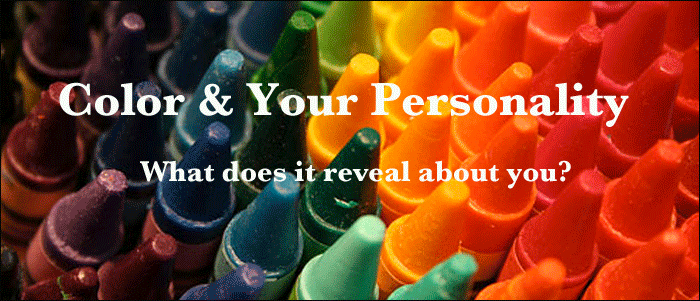
What does your color preference reveal about you?
 The Color-Preference Personality Test Ever wonder why there are so many colors of new cars to chose from, or why an Epson ink printer offers so many color options? What about the color of your shirt or blouse? What color is your bedroom? Your preferences for certain colors is a very personal one and psychologists - as well as marketing researchers - have studied the question of why certain colors appeal to certain people for years. These answers may lie in our attitudes towards life, as well as our emotional states. Color Preferences and their relationship to personality and psychological traits have been utilized in advertising, automotive and the fashion industry for years. Now you can gain some insight on your inner struggles and problems with this highly effective color test. We warn you that this is no party trick. The selections that you make are to be compared with an extremely large database, gathered by psychologists over many years and trials. The results can be very revealing, often surprising, but hopefully very helpful. Please take the color test (above) before you read further so you will not be influenced by the descriptions of colors and your results will be more accurate!
|
|
Primary Colors: What do they mean?
If you look closely -- very closely -- at your computer monitor, you will see that each pixel is made up of three cells. One cell illuminates in red, another in green and the third in blue. This is sometimes referred to as an RGB monitor. By varying the amount of each of these colors, the human eye can be tricked to see a spectrum of colors, including white and black. The human eye has color receptors called cones. It also has three sets which correspond to the red, blue and green light that fall on the retina. These three colors are called primary colors and the perception of colors resulting from their combinations are called secondary colors. Because these primary colors occur frequently in nature, they have corresponding psychological properties that can change our behavior and emotions. Some of these will be discussed below:
Because our blood is red, this color attracts our attention the most. It can indicate an injury to our bodies but can also mean that other re-blooded creatures have been injured or killed, signaling danger. The psychological value of red is associated with fear, anger, danger, heightened awareness, and increased sexual energy. This is apparent in our language. If we are angry we "see red"; if we are in financial danger (debt) we are "in the red"; if we are caught doing something bad we say we have been "caught red handed"; prostitutes typically inhabit a "red light zone". But red can also signify status and is the choice color of kings, bishops and cardinals, and dignitaries are welcomed with a "red carpet." Red is the color that is traditionally given to the lowest chakra, or energy vortex in the human body. Located at the base of the spine, the kundalini is thought of as a snake which rises and energizes the other six chakras. Being in a red painted room has a confining effect as red appears closer to the observer than other colors. It also has been shown to make the heart beat faster and to promote the release of adrenaline. Fashion designers know that primary red is a power color, demanding respect and drawing out the aggressive personality traits of the wearer. In the art of Feng Shui, red symbolizes the South, wealth, the pheonix who rises from the ashes and is red is a perennial symbol of good luck. During Chinese New Year, or TeT, gifts of cash are often given inside a red envelope. It's no surprise that many fruits and vegetables use red to alert humans and animals that they are ripe and ready for eating. In this way they spread their seeds and propogate.
 Variations of Red Magenta -- Psychologically magenta is favored by arbitrators who find it distressing to tolerate indecision in others. The individuals who favor this color are good at holding in their feelings and they often appear shy, but they are remarkably patient. Crimson -- People who favor crimson are strong and very determined individuals. They have strong goals and avoid strife with the motto "live and let live." The only time they will strike out at others in when their own personal freedom or goal is threatened.
Pink -- The Western culture has made pink a feminine color, stressing vulnerability and child-like emotions. But pink also symbolizes the gentle side of human nature, health, abundance and youth.
Joe Arpaio, the self-styled "toughest sherrif in America" believes that pink has a pchologically calming effect. He has made all of his county's prisoners wear pink -- including recently sentenced ex-Heavy Weight boxer, Mike Tyson, who spent time in his facility for drunk driving and related drug charges. Although many prisoners complain that pink is a "sissy color" when worn by men, Sherrif Arpaio claims that the color helps prisoners calm down and contemplate the reasons that got them improsoned.
|
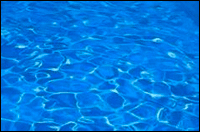 Blue
BlueBlue is associated with wisdom, loyalty and royalty. Because it is representative of the sky and ocean, it has expansive properties, often making a room painted blue look larger than it really is. Blue has been shown to have a calming effect upon people, reducing both their blood pressure and heart rate. For this reasons it is often the color of choice for doctor's offices or emergency waiting areas. In our language, blue has meanings of both good and bad. "Blue blood" refers to being part of a special, royal lineage. "Blue ribbons" are the standard for achieving the first prize on a competition. A "true blue" friend is a description of a very loyal person. Blue is the color of the Virgin Mary, signifying her royalty as the "Queen" of Heaven. But on the negative side, feeling "blue" usually means we are sad and "blue movies" is a terms for pronography. In fashion, blue, especially dark blue, is considered very formal attire. It commands respect and so it the choice color of uniforms for many military forces and police around the world. People who prefer blue usually dislike confrontations and play the role of the diplomat in order to avoid continued conflict. Blue is also the color of the throat chakra, centered around the thyroid gland, and it is believed that personalities preferring blue are good orators, capable of giving a good speech.
 Some different shades of blue:
Azure Blue -- This is the favorite color of people who are content with life, as long as it has some specific goals. People who prefer this color have the attitude that "the journey is better than the destination" and they enjoy the quest so much that, if they achieve it, they quickly invent a new goal to pursue. Pale Blue -- This color speaks of gentleness and the striving for a great cause. It will often be the color of surgeons or hospital staff working in and around the operating room. It is the color of the United Nations Peace Keeping troops and certain religious orders. People who prefer this color are announcing to everyone that they have an important task to achieve and that they are absolutely determined to to succeed. Dark Blue -- Despite this being the favorite color of formal attire, Dark Blue shows a lack of ability to communicate. The color signifies repressed feelings and wearing it often indicates the presence of needless anxieties and a lack of trust for others.
|
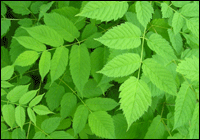 Green
GreenBecause humans have evolved from an environment filled with vegetation, green is a special color that stimulates a restful, secure and balanced feeling. Many interior decorators suggest green themes for city dwellers who want to create an oasis from the busy and frenetic surroundings of the metropolis. On a smaller scale, surrounding oneself with an assortment of live plants can accomplish the same effect. Green is regarded as a great harmonizer, capable of creating a balance between positive and negative emotions. People who prefer green almost always are capable of seeing both sides of an issue, have a strong moral sense of right and wrong, and tend to be idealistic. An example of the above can be seen in the "green Peace" movement where members o that organization often put their lives in jeopardy to protect wildlife, such as whales and other endangered species. We have used the word "Green" to represent efforts to stop pollution and to conserve scarce planetary resources. Wearing green clothing has been found to increase our ability to remember things. Some say this is the result of evolution where journeys through a jungle or forest required having memories of landmarks or specific edible plants. These abilities can be enhanced by mimicking the green colors of vegetation. Green is believed to be the most relaxing color and also the color most responsible for healing. Being surrounded by green is said to be a cure for nausea and vomiting, but green can also cause claustrophobia in individuals prone to have that problem. On the negative side, green is associated with mold and decay. Being "green with envy" describes the belief that envious emotions can cause one to be destroyed from the inside by harboring such feelings.
 The many shades of Green:
Jade Green -- Jade is the most important color in the Orient and wearing this stone is considered to bring good fortune. People who surround themselves with this color are said to be enlightened and capable of understanding life from a higher philosophical point of view. Olive Green -- People who wear this color have usually had some emotional trauma in their life and are dealing with bitterness towards life. On the good side, people who prefer this color will fully appreciate the hard times that affect other people and will have greater empathy than others. A good example is Castro (right) who chose to wear this color throughout his entire political career as a fighter for the working people of Cuba. Many veterans (especially from the Viet Nam War era) recall bitter memories associated with wearing their Olive Green uniforms. Emerald Green -- This is the traditional green worn by Irish to reflect on their culture and history. Even non-Irish associate the color with the stereotypical comaraderie, partying and kinship of St. Patrick's Day celebrations. The color is said to represent the vivid green of Ireland's landscape. Dark Green -- People who prefer dark green are possessive and usually self-obsessed, oblivious to the needs of others. These peple usually have had some dark episode in their life which has turned them inward and they harbor resentment for something that they either did or wished they had done.
|

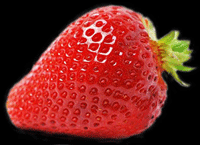 Red
Red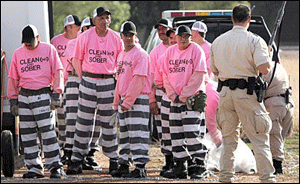 Scarlet -- A person who prefers scarlet is one who enjoys life to the fullest. These individuals usually live according to their own rules and often do not follow the traditional norms. They avoid boring people and always try to experience the maximum fun and excitement from any endeavor.
Scarlet -- A person who prefers scarlet is one who enjoys life to the fullest. These individuals usually live according to their own rules and often do not follow the traditional norms. They avoid boring people and always try to experience the maximum fun and excitement from any endeavor. Sky Blue -- This color expresses constancy, fidelity and love. By doing so, it enables a person wearing these colors to overcome obstibles through a sense of peace and calm. Sky Blue also promotes fantasy and imagination and is the favorite color for baby boys rooms and clothing.
Sky Blue -- This color expresses constancy, fidelity and love. By doing so, it enables a person wearing these colors to overcome obstibles through a sense of peace and calm. Sky Blue also promotes fantasy and imagination and is the favorite color for baby boys rooms and clothing. Pale Green -- this color is associated with youthfulness, play and a touch of immaturity. People who prefer Pale Green often do not finish projects that they begin and have a lack of responsibility. They are often indecisive and procrastinate on the best action to pursue rather than doing anything truly constructie.
Pale Green -- this color is associated with youthfulness, play and a touch of immaturity. People who prefer Pale Green often do not finish projects that they begin and have a lack of responsibility. They are often indecisive and procrastinate on the best action to pursue rather than doing anything truly constructie.